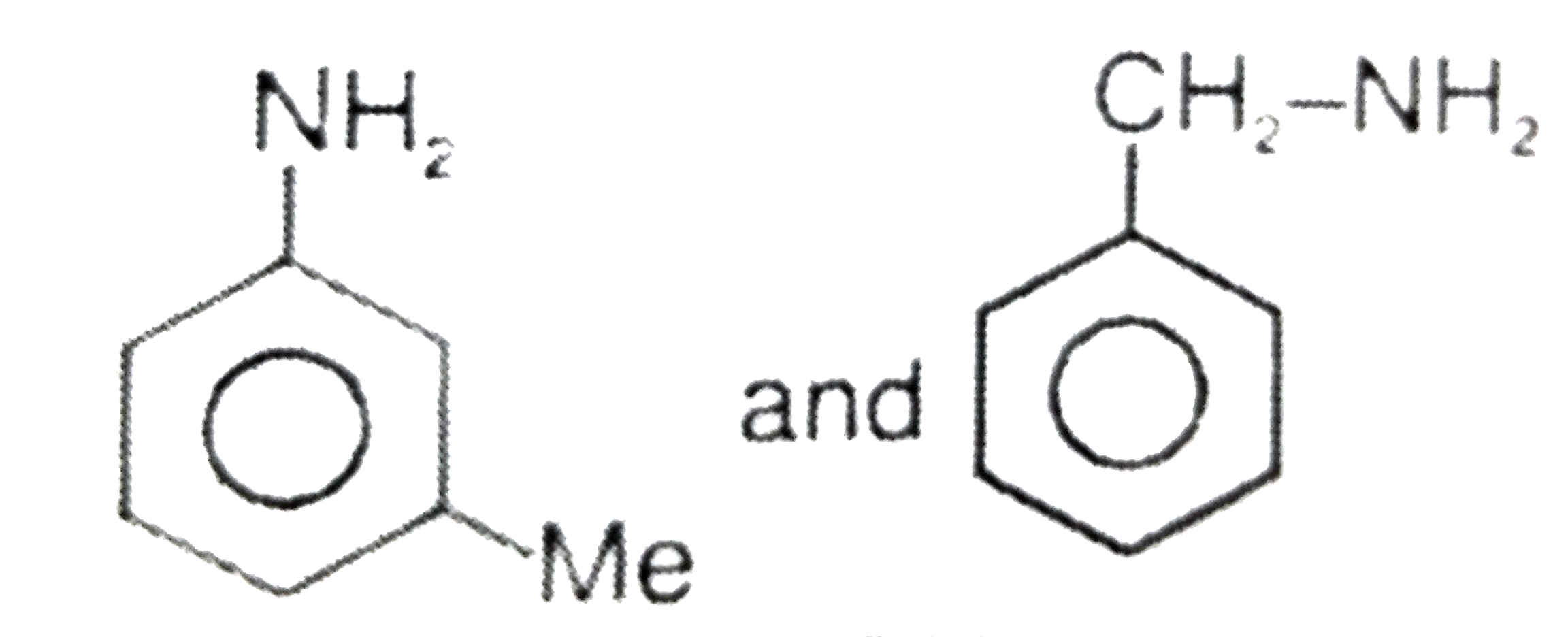Vicinal and gem dihalides can be distinguished by:
aq. KOH
Zn dust
alc. KOH
Br2 water
The correct Answer is:A
To distinguish between vicinal and geminal dihalides, we can follow these steps:
1. Understanding Vicinal and Geminal Dihalides:
- Vicinal Dihalides: These are dihalides where the two halogen atoms are attached to adjacent carbon atoms. For example, 1,2-dibromoethane (Br-CH2-CHBr).
- Geminal Dihalides: These are dihalides where the two halogen atoms are attached to the same carbon atom. For example, 1,1-dibromoethane (Br-CHBr-CH3).
2. Reaction with Aqueous KOH:
- When vicinal dihalides are treated with aqueous KOH, a nucleophilic substitution reaction occurs. The halogen atoms are replaced by hydroxyl (OH) groups, leading to the formation of a diol (ethylene glycol in the case of 1,2-dibromoethane).
- For example:
Br-CH2-CHBr+2KOH (aq)→HO-CH2-CH(OH)-Br→HO-CH2-CH(OH) (ethylene glycol)
3. Geminal Dihalides Reaction:
- When geminal dihalides are treated with aqueous KOH, the reaction leads to the formation of an aldehyde or ketone due to the instability of the intermediate with two hydroxyl groups on the same carbon. For example, 1,1-dibromoethane reacts as follows:
Br-CHBr-CH3+2KOH (aq)→HO-CH(OH)-CH3→CH3CHO (acetaldehyde)+H2O
4. Distinguishing the Products:
- The key difference in the products formed is:
- Vicinal dihalides yield a diol (like ethylene glycol).
- Geminal dihalides yield an aldehyde (like acetaldehyde).
5. Conclusion:
- Therefore, the distinction between vicinal and geminal dihalides can be made based on the products formed when they react with aqueous KOH. Vicinal dihalides produce alcohols, while geminal dihalides produce aldehydes.
Final Answer:
Vicinal and geminal dihalides can be distinguished by their reaction with aqueous KOH, where vicinal dihalides yield alcohols and geminal dihalides yield aldehydes.
---
- Vicinal Dihalides: These are dihalides where the two halogen atoms are attached to adjacent carbon atoms. For example, 1,2-dibromoethane (Br-CH2-CHBr).
- Geminal Dihalides: These are dihalides where the two halogen atoms are attached to the same carbon atom. For example, 1,1-dibromoethane (Br-CHBr-CH3).
- When vicinal dihalides are treated with aqueous KOH, a nucleophilic substitution reaction occurs. The halogen atoms are replaced by hydroxyl (OH) groups, leading to the formation of a diol (ethylene glycol in the case of 1,2-dibromoethane).
- For example:
Br-CH2-CHBr+2KOH (aq)→HO-CH2-CH(OH)-Br→HO-CH2-CH(OH) (ethylene glycol)
- When geminal dihalides are treated with aqueous KOH, the reaction leads to the formation of an aldehyde or ketone due to the instability of the intermediate with two hydroxyl groups on the same carbon. For example, 1,1-dibromoethane reacts as follows:
Br-CHBr-CH3+2KOH (aq)→HO-CH(OH)-CH3→CH3CHO (acetaldehyde)+H2O
- The key difference in the products formed is:
- Vicinal dihalides yield a diol (like ethylene glycol).
- Geminal dihalides yield an aldehyde (like acetaldehyde).
- Therefore, the distinction between vicinal and geminal dihalides can be made based on the products formed when they react with aqueous KOH. Vicinal dihalides produce alcohols, while geminal dihalides produce aldehydes.
Vicinal and geminal dihalides can be distinguished by their reaction with aqueous KOH, where vicinal dihalides yield alcohols and geminal dihalides yield aldehydes.
Topper's Solved these Questions
Similar Questions
Knowledge Check
Phenol and benzoic acid can be distinguished by :
Aaqueous NaHCO3Baqueous NaNO3Caqueous NaOHDconc. H2SO4
Primary and secondary amines can be distinguished by
View SolutionFormic acid and Acetaldehyde can be distinguish by
View SolutionPropyne and propene can be distinguished by :
View SolutionPhenol and carboxylic acid can be distinguished by
View Solutionp-Chloroaniline and anilinium hydrochloride can be distinguished by :
View SolutionFormic acid and formaldehyde can not be distinguished by treating with
View Solution1-Propanol and 2- propanol can be distinguished by:
View Solution


 can be distinguish by
can be distinguish by